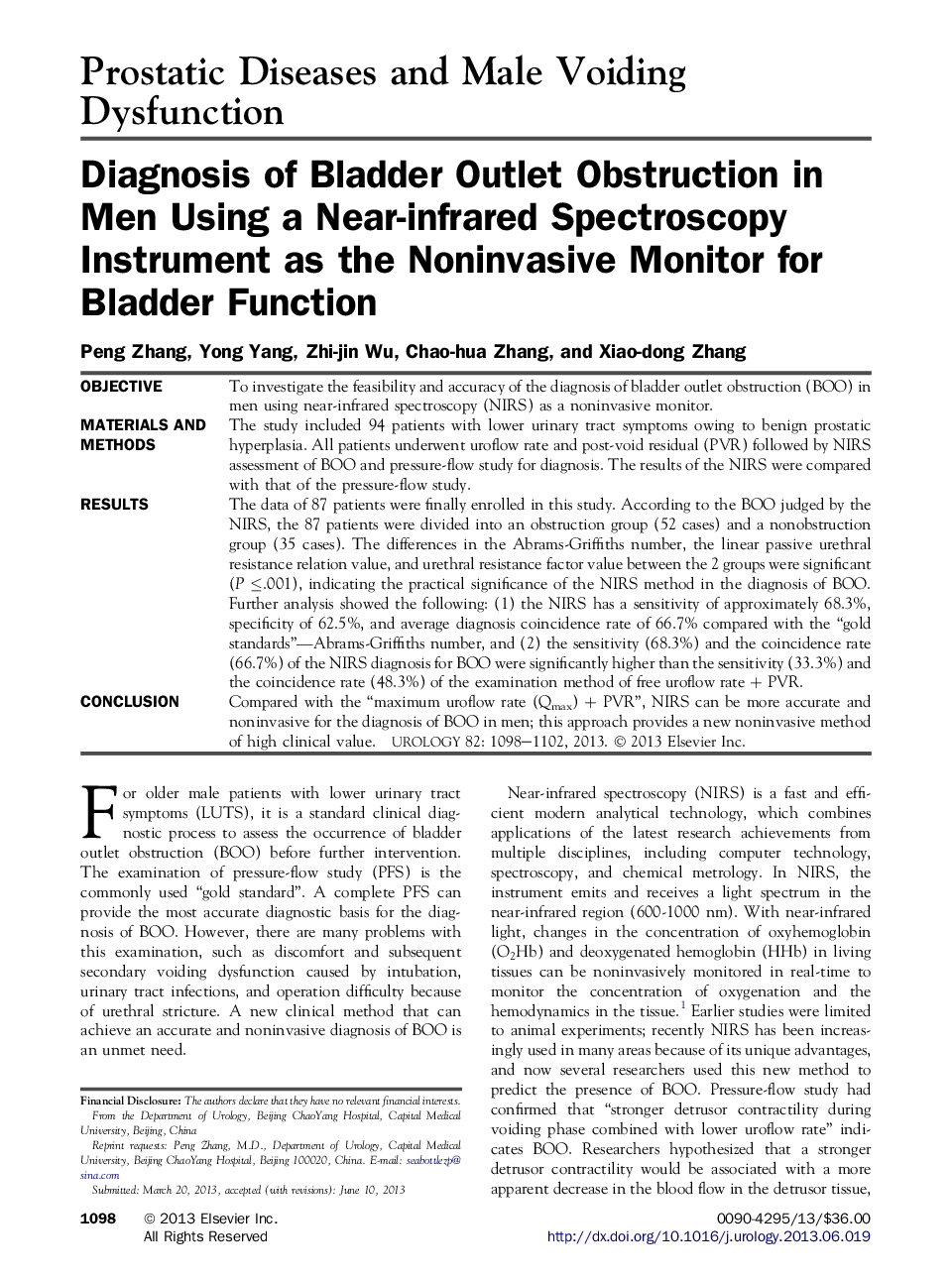| Article ID | Journal | Published Year | Pages | File Type |
|---|---|---|---|---|
| 3899235 | Urology | 2013 | 5 Pages |
ObjectiveTo investigate the feasibility and accuracy of the diagnosis of bladder outlet obstruction (BOO) in men using near-infrared spectroscopy (NIRS) as a noninvasive monitor.Materials and MethodsThe study included 94 patients with lower urinary tract symptoms owing to benign prostatic hyperplasia. All patients underwent uroflow rate and post-void residual (PVR) followed by NIRS assessment of BOO and pressure-flow study for diagnosis. The results of the NIRS were compared with that of the pressure-flow study.ResultsThe data of 87 patients were finally enrolled in this study. According to the BOO judged by the NIRS, the 87 patients were divided into an obstruction group (52 cases) and a nonobstruction group (35 cases). The differences in the Abrams-Griffiths number, the linear passive urethral resistance relation value, and urethral resistance factor value between the 2 groups were significant (P ≤.001), indicating the practical significance of the NIRS method in the diagnosis of BOO. Further analysis showed the following: (1) the NIRS has a sensitivity of approximately 68.3%, specificity of 62.5%, and average diagnosis coincidence rate of 66.7% compared with the “gold standards”—Abrams-Griffiths number, and (2) the sensitivity (68.3%) and the coincidence rate (66.7%) of the NIRS diagnosis for BOO were significantly higher than the sensitivity (33.3%) and the coincidence rate (48.3%) of the examination method of free uroflow rate + PVR.ConclusionCompared with the “maximum uroflow rate (Qmax) + PVR”, NIRS can be more accurate and noninvasive for the diagnosis of BOO in men; this approach provides a new noninvasive method of high clinical value.
